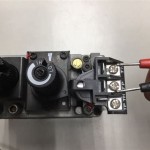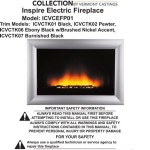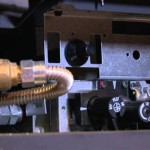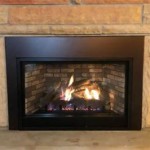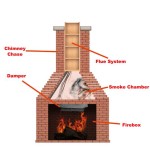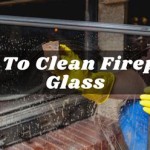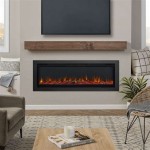Fireplace Damper Replacement Parts: Essential Components for Efficient Heating and Safety
Fireplace dampers are crucial components that regulate airflow in your fireplace, influencing both heat output and safety. Over time, these dampers can deteriorate due to wear and tear, rust, or improper maintenance. When your fireplace damper malfunctions, it can lead to inefficient heating, smoke issues, and even fire hazards. Recognizing the signs of a failing damper and understanding the available replacement parts are essential for ensuring safe and effective fireplace operation. This article will delve into the importance of fireplace damper replacement and explore the common components you might need.
Understanding Fireplace Dampers and Their Function
A fireplace damper is essentially a movable plate or valve that controls the flow of air through the flue. When the damper is open, it allows smoke and combustion gases to vent freely through the chimney. When closed, it seals the flue, preventing drafts and cold air from entering the room while ensuring that smoke and fumes are not drawn back into the house.
Fireplace dampers come in various designs, including: *
Traditional Dampers:
These are typically made of metal and operate with a lever or handle that moves a hinged plate to open or close the flue. *Top-Mounted Dampers:
These are located at the top of the chimney and controlled by a cable or rod. *Bottom-Mounted Dampers:
These are positioned at the bottom of the chimney and are often operated by a lever or handle located inside the fireplace. *Automatic Dampers:
These use sensors or thermostats to automatically adjust airflow based on conditions.Identifying Signs of a Failing Fireplace Damper
Several signs might indicate that your fireplace damper needs replacement. Recognizing these early warning signals is crucial to prevent potential hazards and ensure efficient fireplace operation. Here are some key indicators:
- Difficulty opening or closing the damper: If the damper struggles to move freely or becomes stuck in a position, it may be due to rust, debris, or mechanical failure.
- Smoke entering the room: A malfunctioning damper might allow smoke and combustion gases to back up into the house, creating a hazardous and unpleasant environment.
- Drafts entering the room: If you feel cold air blowing into your home from the fireplace, it could be a sign of a faulty damper that is not properly sealing the flue.
- Visible damage or wear: Check the damper for signs of rust, corrosion, cracks, or excessive wear. These indicate potential issues that might require replacement.
- Unusual noises: A creaking or rattling noise from the damper area could be a sign of a loose or damaged component.
Common Fireplace Damper Replacement Parts
Fireplace damper replacement parts are readily available and can be purchased from hardware stores, home improvement centers, and online retailers. The specific parts you need will depend on the design and age of your damper. Here are some of the most common replacement parts:
-
Damper Plate:
This is the main component that seals the flue. It might need replacement if it is damaged, warped, or rusted. -
Damper Handle or Lever:
If the handle or lever is broken or worn, it will need replacement. These components are often made of metal or plastic and connect to the damper plate to control its position. -
Damper Cable or Rod:
The cable or rod connects the damper handle to the plate, allowing for remote operation. These components might need replacement if they become frayed, broken, or corroded. -
Damper Seals:
Seals are commonly made of rubber or silicone and help to create a tight seal around the damper plate, preventing air leakage. These might need replacement if they have deteriorated, become brittle, or have lost their ability to seal properly. -
Damper Guide Rails:
These are metal tracks that guide the damper plate as it moves to open or close. They may also need replacement if they are damaged or worn. -
Damper Springs:
Some dampers use springs to help close the damper plate or return it to its original position. These might need replacement if they become weak or break.
It’s important to note that different damper designs require specific replacement parts. It is best to consult with a fireplace professional or refer to your fireplace manual for detailed instructions on identifying the correct parts for your particular damper.

Fireplace Dampers Throat Vs Top Mount Swede Chimney Sweep Dryer Vent Cleaning

Fireplace Damper Repair Full Service Chimney Kansas City

Fireplace Dampers Cast Iron Marshall Stamping

Damper Plate Throat The Blog At Fireplacemall

Replacement Chimney Damper Handle Fireplace Rockford

Fireplace Damper Repair Full Service Chimney Kansas City

Nicholas Chimney Sweeping Stove Fireplace Services Vienna Virginia

Damper Repairs Replacement Yamhill County Chimney

Drop In Damper Chimney Replacement Parts

Don T Let A Leaky Chimney Damper Dampen Your Spring American Masonry
Related Posts

